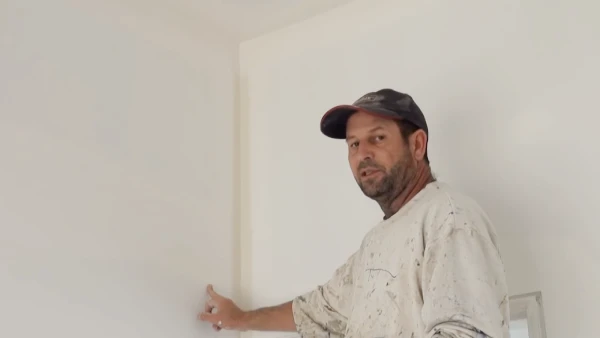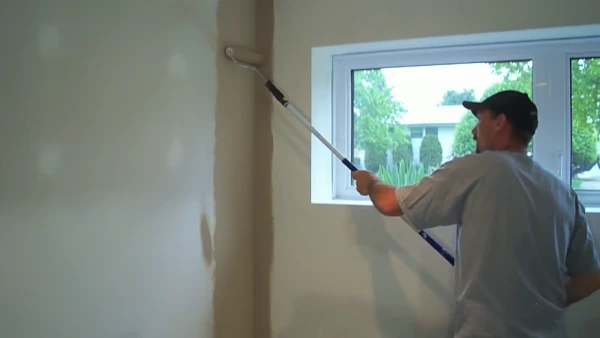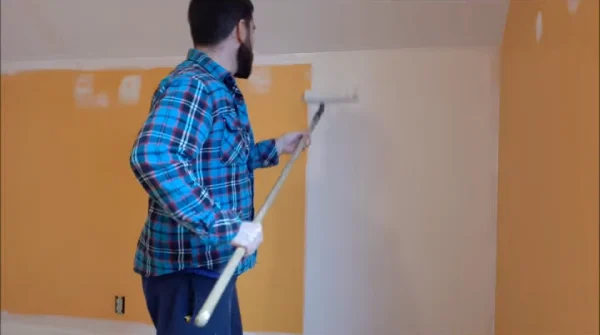Last Updated on June 3, 2023
Are you planning to paint your sheetrock? Before you grab that paintbrush, it’s important to know whether or not priming is necessary.
You should prime your sheetrock before painting. Primer acts as a base coat for your paint and helps it adhere better to the surface of the sheetrock.
Without primer, the porous nature of the drywall can absorb too much of the paint, leaving a blotchy or uneven finish. Primer can also help cover up any stains or imperfections on the surface of the sheetrock so that they don’t show through in your final coat of paint.
Using it will ensure a smoother, more even finish for your painted walls, saving you time and money. We will discuss what happens if you do not use a primer before painting, how many coats are necessary, and more. So keep reading.
What Happens If You Don’t Prime Before Painting?

If you paint without priming, you could face a variety of issues. Below are the details:
1. Poor Adhesion
Without proper primer, the paint on your walls may start to peel and flake, leaving you with a poorly adhering mess. The reason is that sheetrock, also known as drywall, is made of porous material that doesn’t have a smooth surface.
When you apply paint directly onto this surface without using primer, the paint can’t properly bond with the wall. Due to this, it’s more likely to chip or peel off over time.
Priming creates a barrier between the wall and the paint, eliminating this issue with your sheetrock before painting. This barrier allows for better paint adhesion to the surface and helps prevent peeling or chipping. Also, it fills in small cracks and holes on your walls that you would otherwise have to paint over.
2. Uneven Appearance
To achieve a polished and flawless appearance, it’s essential to utilize primer to fill in any small imperfections before applying paint. Without primer, the surface of your sheetrock may appear uneven or bumpy due to visible scratches, dents, or uneven textures.
Even if you think the surface is smooth enough for painting, using primer can help ensure your final result looks professional.
Primer fills in porous surfaces like sheetrock and creates a smooth base layer for the paint to adhere to. This ensures that your paint will go on evenly without any streaks or inconsistencies.
With primer, you’ll be able to ensure that every inch of your wall has an even coat of paint, giving you the best results possible.
3. Absorption and Coverage Issues
If you fail to utilize a primer on porous surfaces like sheetrock, you may experience paint absorption and coverage issues.
Without a primer, the surface will absorb the paint unevenly, leading to an inconsistent color or sheen. This can frustrate you for a new paint job to look polished and professional.
Using a primer before painting is essential for achieving satisfactory coverage on porous surfaces like sheetrock. Not only does it create a consistent base, but it also helps seal off the surface and prevent future damage from moisture or mildew.
4. Reduced Durability
If you skip the primer on your sheetrock, your paint job may not last as long and may be more susceptible to everyday wear and tear.
Primer creates a strong foundation for the paint. This improves its durability and resistance to moisture, mold, and other environmental factors affecting its longevity.
How many coats of primer do you need for your drywall before painting?

To ensure a smooth and even paint finish, it’s recommended to apply one or two coats of primer on your drywall before painting. The number of coats required depends on several factors, such as the condition of the drywall and the type of primer being used.
For new drywall that has never been painted before, it’s best to prime the surface twice to achieve optimal adhesion.
If your drywall has been previously painted and is in good condition, one coat of primer may be sufficient. In any case, if there are any porous areas or patched spots on the surface, a second coat is necessary to create a uniform surface for painting.
Can I just use white paint as a primer on my drywall?
White paint may be a quick fix for your drywall, but it won’t give you the same smooth and durable finish as a dedicated primer.
While white paint can provide some coverage, it lacks specific properties that make primer essential in preparing your drywall for painting. It can result in uneven absorption of topcoat paint, poor adhesion, and color bleed-through.
Primer seals the surface and minimizes paint absorption, creating an appropriate surface for paint adhesion. Also, it provides a consistent base for the final paint color. Using a primer on your drywall before applying white paint promotes better coverage and improved durability.
How long to wait between drywall primer and paint?
Waiting overnight or at least 24 hours after applying drywall primer is often recommended for optimal results. It gives the primer time to dry and cure before painting.
There are usually 3 to 4 hours of drying time for water-based latex primers, but check the product label or manufacturer’s instructions.
Factors such as temperature and humidity conditions can also affect the drying time of the primer. It might take longer to dry in a colder or more humid environment.
Do you need to sand drywall after primer?

It is recommended to sand drywall after applying primer. In the case of bumps, dents, or other imperfections, sanding the primed walls will level them out.
Once the final paint layer is applied, this will produce a more polished and professional appearance. Sanding will also create better adhesion for the final coat of paint, allowing it to adhere more evenly and last longer.
Get a Flawless Finish Using Primer on Drywall
Now that you know the importance of using a primer before painting your drywall. Skipping the primer step can lead to uneven coverage, a blotchy appearance, and poor adhesion.
To ensure a professional and long-lasting finish, apply at least two coats of primer before painting. After applying the primer, you must wait an adequate amount before starting your painting project.
Also, sanding after applying the primer is necessary if your drywall surface has rough spots or imperfections.
You’ll get a flawless finish if you follow these guidelines and prime your walls before painting them.



